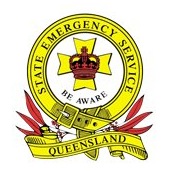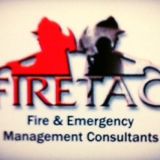Information
-
Audit Title
-
ASSESSMENT CONDUCTED BY
-
CONDUCTED ON
-
DOCUMENT NO.
-
STATION
-
CITY
-
TYPE OF CALL
-
LOCATION OF CALL (Kitchen eg)
PLEASE OBSERVE THE WORK ACTIVITIES AND USE THE CHECKLIST BELOW TO DETERMINE/ASSESS IF MEASURES OF CONTROL WERE TAKEN TO ENSURE THE ACTIVITY WAS CONDUCTED SAFELY.
1. PRIOR TO THE CALL
-
Was the call at the beginning, middle or end of the shift?
-
Footwear in good condition and safely tied?
2. ON THE WAY TO THE CALL (if observed)
-
Gathered information from dispatch and started their risk assessment?
3. AT THE SCENE
-
Positioned the ambulance to ensure their safe exit and egress?
-
Positioned Ambulance to ensure safe unload and load of equipment?
-
Assessment of patient
4a. PREPARING FOR THE LIFT OR TRANSFER
-
Selected the appropriate equipment taking into consideration the work environment and weight/height of the patient.
-
Called for additional help, when dictated by weight/height of patient and circumstances that increase risk.
-
Early recognition of need for additional help.
-
Call for additional help did not affect patient outcome
-
Checked for and removed any hazards on patient or self.
-
Discussed and agreed on a plan with persons involved in lift or transfer.
4b. PREPARING FOR THE LIFT OR TRANSFER
-
Communicated plan to patient (if conscious)
-
Established feedback mechanism with patient.
-
Positioned equipment properly (if needed)
-
Positioned body properly
-
Established firm footing.
-
Positioned feet shoulder width apart.
-
Established firm power grip on equipment or patient
-
Communicated sequence of lift with partner and other agency personnel.
5. POSITIONING PATIENT ON EQUIPMENT OR MOVING WITH PATIENT
-
Turned body with feet and avoided unnecessary twisting when positioning the patient on the equipment.
-
Properly secured patient to equipment.
6. LIFTING OR TRANSFERRING USING WHICH STRETCHER?
-
Was there a piece of equipment used to lift or transfer.
-
Which lifting device was used?
-
Bent knees?
-
Used a pelvic tilt?
-
Lifted with legs?
-
Exhaled when lifting/pulling?
-
Kept load close to body?
-
Maintained balance?
-
Maintained contact and communication with partner(s)?
-
Maintained control of the lift/transfer throughout?
-
Lift/transfer was gradual, smooth motion with no jerking?
-
Lift/transfer plan was implemented as planned?
-
Clear route of access/egress?
7. LIFTING OR TRANSFERRING USING CHAIR COT OR SCOOP STRETCHER
-
Was there a second piece of equipment used to lift or transfer?
-
Which device was used?
-
Bent knees?
-
Used a pelvic tilt?
-
Lifted with legs?
-
Exhaled when lifting/pulling?
-
Kept load close to body?
-
Maintained balance?
-
Maintained contact and communication with partner(s)?
-
Maintained control of the lift/transfer throughout?
-
Lift/transfer was gradual, smooth motion with no jerking?
-
Lift/transfer plan was implemented as planned?
-
Clear route of access/egress?
8. TRANSFERRING PATIENT TO AMBULANCE
-
Patient not wheeled with stretcher in top two positions
-
Lift/transfer plan was implemented as planned?
-
Patient always attended while on equipment
-
Stretcher pushed not pulled
-
Ensuring that all belts are securely fastened
9. PREPARING TO LOAD PATIENT INTO AMBULANCE
-
Ensured no tripping hazards.
-
Discussed and agreed on a plan with persons involved in lift or transfer.
-
Communicated plan to patient (if conscious).
-
Established communication mechanism with patient.
-
Correctly positioned the equipment the patient was on (if needed).
-
Positioned personnel properly.
-
Established firm footing.
-
Positioned feet shoulder-width apart.
-
Established firm power grip on equipment.
-
Maintained control of the "Gatch" throughout the lift.
-
Ensure safety hook engaged.
10. UNLOADING PATIENT FROM AMBULANCE
-
Ensure sufficient space to unload patient safely.
-
Bent knees when lifting/lowering.
-
Used a pelvic tilt.
-
Kept back straight.
-
Lowered/lifted with legs.
-
Exhaled when lifting/pulling.
-
Kept load close to body.
-
Maintained balance.
-
Maintained contact and communication with partner(s)?
-
Maintained control of the "Gatch" throughout the lift.
-
Used all available assists on the equipment and in the ambulance.
-
Lift/transfer was gradual, smooth motion with no jerking?
-
Turned body with feet and avoided unnecessary twisting when positioning the patient on the equipment.
-
Lift/transfer plan was implemented as planned?
11. AT HOSPITAL/TRIAGE
-
Stretcher correct height
-
All restraints secure
-
Patient advised not to move
-
Patient was not left unattended
12. TRANSFERRING FROM STRETCHER TO HOSPITAL BED
-
Communicated sequence of transfer with patient, partner and other agency personnel
-
Stretcher correct height
-
Slider board used
-
Correct lifting techniques
-
Sufficient personnel
-
Communication with all personnel involved
DID YOU OBSERVE
-
Shoulder straps securing the patient during transport
-
All equipment in the back of the ambulance secured
-
Both paramedics wearing seat belts during transport
13. DEBRIEF WITH CREW
-
Input from crew
-
Feedback to crew
-
Evaluation form to crew
ADDITIONAL COMMENTS OF INSPECTOR(S):
-
Any other comments, especially related to any increased risk of MSI, when conducting the lift or transfer?
-
OBSERVED BY DOSH MEMBER (Print & sign first/last name)










